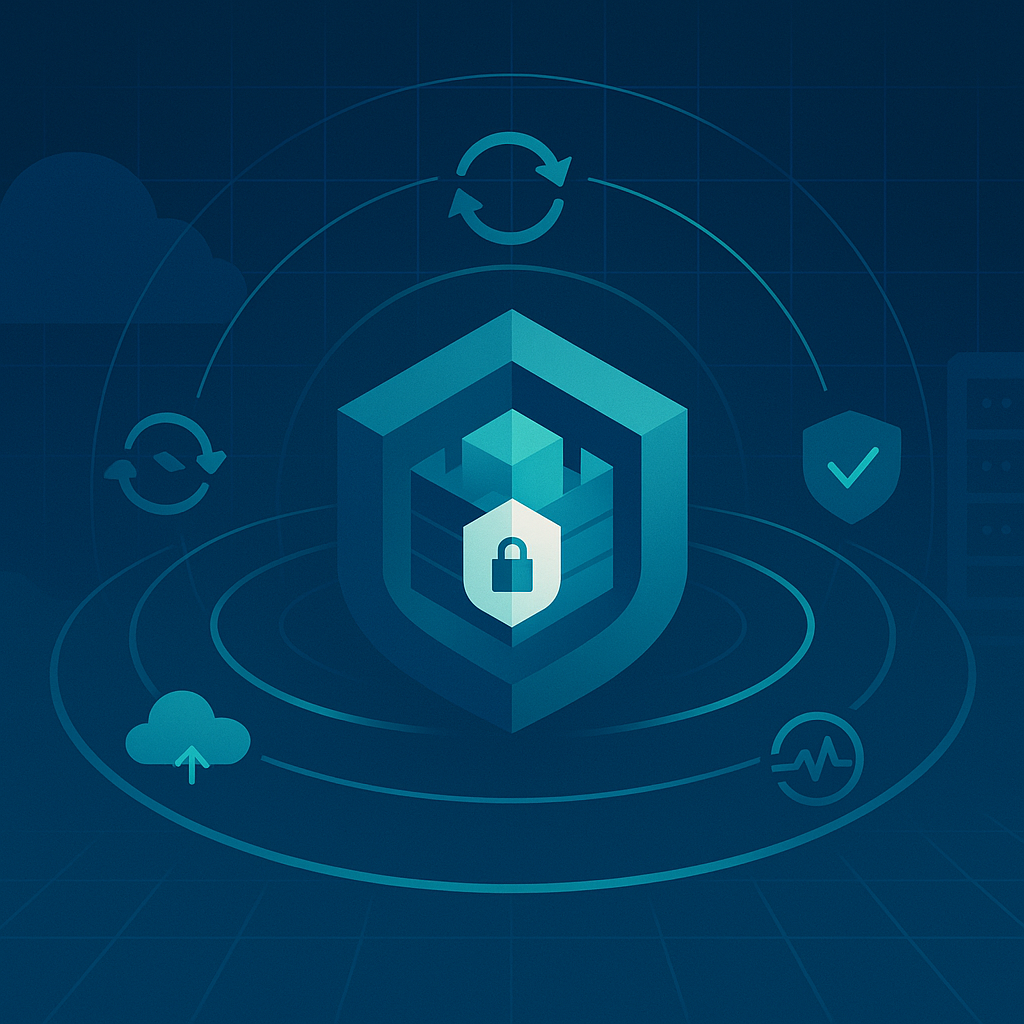DATA PROTECTION TRENDS, NEWS & BACKUP TIPS
Data Backup and Disaster Recovery Q&A

Data Protection Trends, News & Backup Tips
What Makes a Disaster Recover System Succeed?

Right in Sync is a blog series featuring interviews with customers, executives and influencers from the CyberFortress community about their experiences and advice on timely topics. In this edition, we speak with our own Senior Cloud Architect Brad Jervis about data backup and disaster recovery. He is a Veeam Vanguard and VMware vExpert and an enthusiast of all things tech, particularly in the cloud, software defined datacenter and virtualization realms.
Life in the Clouds: Interview with Senior Cloud Architect Brad Jervis
CyberFortress: What tech trend do you see right now that you wouldn’t have predicted a decade ago?
Brad: Ten years ago, virtualization was just starting to gain a toehold and people were still wary. If you asked me then if cloud was going to be a huge player, I’d probably have said no way. There were few cloud services, and those that did exist were shoddy. Five years ago, it was a completely different story. The writing was on the wall and you could see that cloud was where everything was going. Not coincidentally, that’s also when I decided to leave my role at a managed services provider (MSP) to join a cloud player like CyberFortress.
CyberFortress: What trend do you see right now that’s surprising?
Brad: Many IT pros still don’t fully understand what’s involved with data disaster recovery (DR), especially now that so many employees are working remotely due to the pandemic. I do a lot of DR testing work, particularly guiding customers on how best to tackle it. There’s a huge disconnect for administrators on how to do testing effectively and what their goals should be.
The big problem is that admins don’t always work with managers to gain a true sense of how users access data and apps. They feel that if the servers are up and they can access them, all is well. But when you ask how users are going to get to these resources, you will often find that IT hasn’t quite thought that out.
If you have hundreds of users and only a handful of IT folks, having limited staff log into every user machine remotely following a disaster will take a long time. I stress to customers they should only consider their recovery time objectives (RTO) met when every user is up and running with everything they need to work.
CyberFortress: What is the biggest issue right now enterprises are facing regarding data availability, data backup and data disaster recovery?
Brad: As I mentioned earlier, with the pandemic, I’ve seen a lot of companies struggle to get a handle on this with their remote workforce. Thing is, it’s not the boogeyman many think it is. In fact, companies are realizing having employees work from home during a data disaster recovery event isn’t so bad. In fact, it presents many significant benefits.
The problem is some companies haven’t adjusted their data disaster recovery strategies to adapt to this new paradigm. And as the pandemic has continued, I’ve seen DR and data backup take a backseat to other IT priorities, even to the point of organizations cutting back on data protection. It’s unfortunate.
As a data backup & disaster recovery services provider, we basically sell an insurance policy. However, in tough times, when companies are forced to tighten their belts, they’ll cut that because it hasn’t been called into use before. It’s quite a gamble when you consider an entire organization could be lost just because you were trying to save a few bucks.
CyberFortress: What are the pain points that drive organizations to choose CyberFortress data backup and disaster recovery services?
Brad: IT knows they need data backup & disaster recovery services, but what usually moves them to action is when an executive makes it a priority. A lot of IT admins work 10-12 hours a day, they don’t always have time to get into the weeds with vendors like Veeam, products and best practices. Often, they want to make it as easy as possible and tick off that checkbox for their executive report — and that’s a primary reason they come to us.
I alone have done well over two-hundred data disaster recovery tests for customers, never mind the rest of our team. We’re very good at keeping comprehensive records and have seen just about everything. For instance, one of the big issues in failing over is that Active Directory won’t come up in the DR environment. There can be many reasons for this. One of the biggest causes is a missing domain controller, which causes the DR solution to stop copying files to avoid a split brain, which is when you have different data written to two separate databases.
Basically, it comes down to understanding all the dependencies inside the environment so you know what apps need for everything to work. It’s weird to say that, because most admins would say, of course I know there are dependencies, but you’d be surprised how often we remind IT that they’re also bringing up AD and DNS servers as part of the test, and they’ve got plenty of dependencies. We’ve got that knowledge, and it can save IT a lot of time, cost and headaches.
CyberFortress: You mentioned Veeam. How do you see the relationship with them evolving over the next 12-24 months?
Brad: They’re a very important partner and our relationship is only going to get stronger. On a day-to-day basis, the solutions our customers use most right now are Veeam Cloud Connect and Veeam Agent for Windows. Right now, Veeam is moving towards object storage, which we’re really interested in, as it’s the basic architecture on which cloud storage is built. It’s a different way of storing data from the way it’s typically done on-premises. Instead of individual blocks, everything is put into objects and retrieved randomly.
Both organizations want to be on the forefront of innovation – it’s one of the reasons this has been such a great partnership — and we expect some joint work in this area.
CyberFortress: Who or what influenced you early in your career?
Brad: When I was a kid, I was in a bad car accident that required a lot of surgery on my foot. I didn’t have much interest in computers at the time, but when you’re stuck in bed, it’s something to do. I had an old Pentium and began messing around with programming. I got hooked and ever since I’ve been a huge fan of tech.
When I went to college, I had a professor at Rochester Institute of Technology who taught systems administration. He would not let you off easy – he asked tough questions and only gave subtle hints at the answer – and frankly I hated him while I was taking his class.
But, soon after that class, I started working part time at an MSP’s help desk, where I realized how much I’d learned from this guy, especially about how to troubleshoot when no outside help was available. After a few months, I went back, told him how I had once felt, and how much his class ended up meaning so much to me.
CyberFortress: What do you do to blow off steam?
Brad: I grew up poor, literally in a log cabin in the middle of the woods, so I very much appreciate traveling – Portugal and California being two of my favorite spots. When I started at CyberFortress, I really got the bug because there was a lot of travel involved and I loved it. On a daily basis, though, I blow off steam with music. I play guitar, mandolin, and drums. When you have a stressful day, nothing quite beats the drums, bad pun intended.
To find out how CyberFortress can help your organization with Data Backup & Disaster Recovery Services, contact us today. For a comprehensive collection of valuable insights, including whitepapers, webinars, and expert articles, explore our Resources section.
Share this on:
Get Pricing








